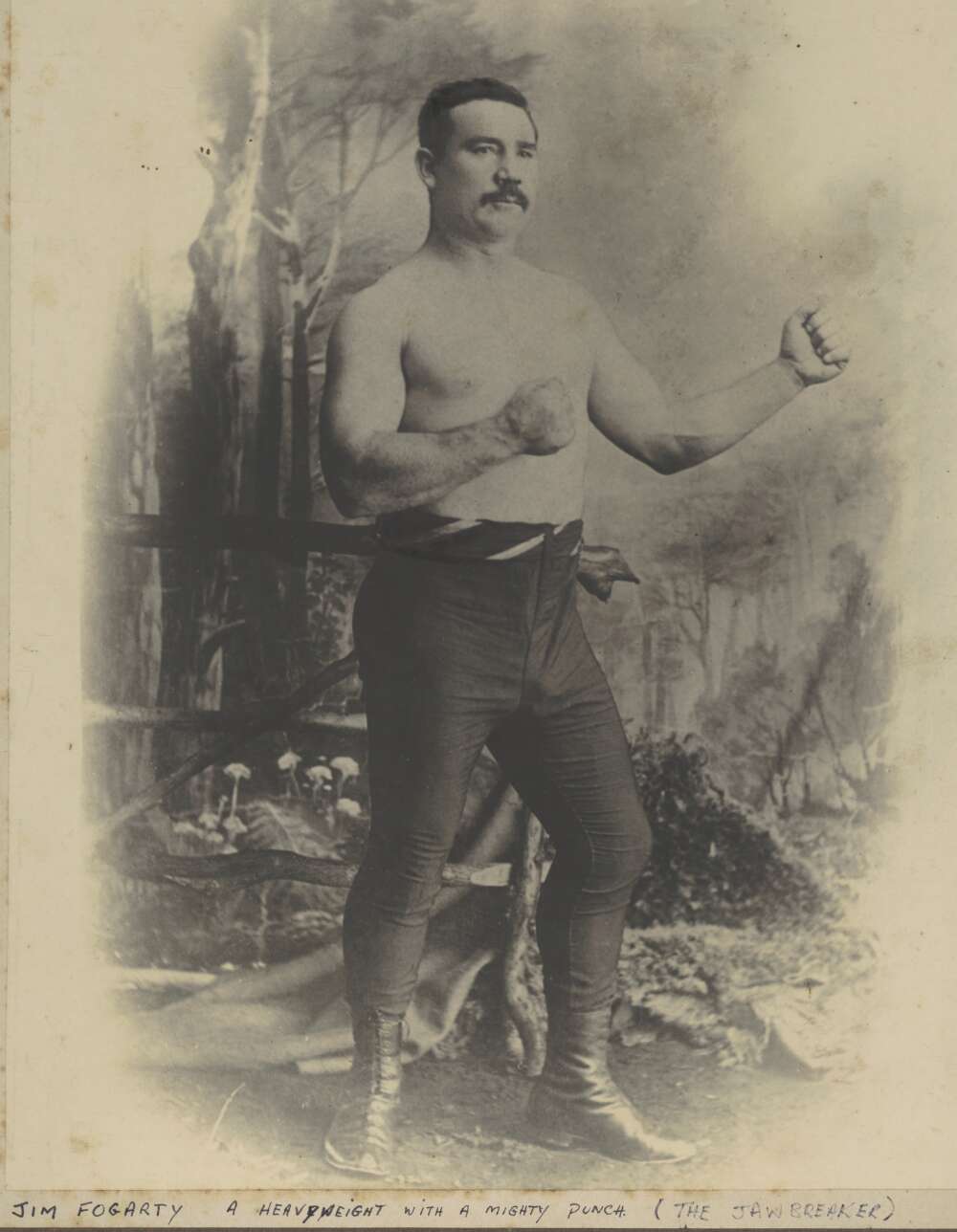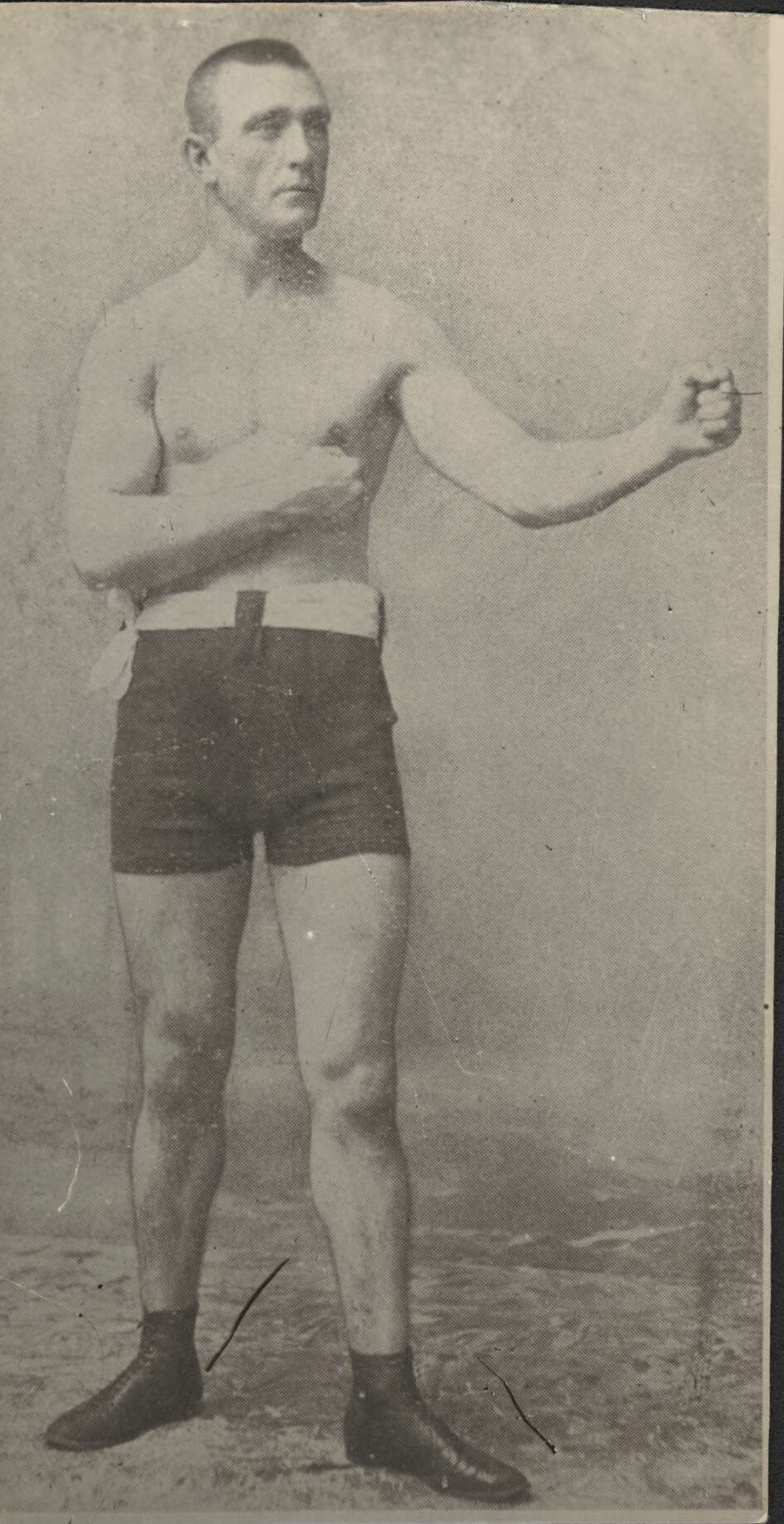Within a couple of days of the Darlinghurst Skating Rink’s closure, it was announced the building would have a new life as the headquarters of the newly formed Australian Athletic Club. The club’s objects were of a ‘social and gymnastic character’ for the ‘promotion of athletic and manly sport’.
The hall was to be fitted up ‘in an elaborate manner’ and be ’the finest club of its kind in the world’ featuring a running track around the entire hall interior as well as billiard, smoking, reading, refreshment and strangers’ rooms on the Liverpool Street side of the building. The auditorium featured seating accommodation for approximately 6,000 people. It was originally styled the ‘Olympic Athletic Club’, but its name was quickly changed to the Australian Athletic Club prior to its official opening in October 1890.1
On the organising committee was the prominent Jewish entrepreneur, Sidney Cohen, who was manager and secretary of the club, as well as the building’s architect, Robert Clarence Backhouse, who took charge of the building’s alterations.2
The main drawcard of the club were its boxing classes and matches, led by the notorious Laurence ‘Larry’ Foley, who occupied the post of ‘Director of Gymnasium’. The boxing ring was constructed in the centre of the hall and under Foley’s management, several instructors were employed, including four boxers, two wrestlers, two gymnasts and two swordsmen. The first boxing contest took place on 22 September in front of a crowd of 700 between ‘The Jawbreaker’, Jim Fogarty, and Charlie Dunn. The contest was over quickly, with Dunn knocked out in the second round.3

'The Jawbreaker', Jim Fogarty, 'A heavyweight with a mystery punch', 1887
National Library of Australia, [PIC/8395/976 LOC Drawer PIC/8395]

Charlie Dunn, boxer, 1886-92
National Library of Australia, [PIC/8395/619 LOC Album 1049/13]
According to one newspaper, Foley left school at a young age and worked on the railways before his ‘wonderful fighting ability became apparent’. As a teenager Foley participated in ‘party fights’, a euphemism for the fights between the ‘push gangs’ of Sydney, of which he reportedly became a leader of the group known as the ‘Greens Push’.4
On opening night in October 1890, between 3,000 and 4,000 people attended the Australian Athletic Club which featured a contest between Hock Johnson, a lightweight boxer and later well-known bookmaker, and ’little’ Abe Willis. That night, Foley entered the ring with Jack Molloy, ’the prettiest boxer in Australia’, and the audience was treated to a trapeze act from the St Clair Brothers. Another notable appearance was from one of Foley’s apprentices and fellow push gang member, Albert Griffiths aka ‘Young Griffo’, who, only a month prior, became the first Australian-born world boxing champion.5

Albert Griffiths 'Young Griffo', Featherweight Champion of the World, 1890
National Library of Australia, [PIC/8395/957 LOC Drawer PIC/8395]
In a deputation in November 1890 the New South Wales Premier, Sir Henry Parkes, questioned Sidney Cohen on the use of gloves in the fights at the premises. Cohen revealed several details in relation to its operations including that at that time, the club had about 160 members. Parkes concluded it was not within his desire or powers to ‘restrict the liberties of the people’ and that he doubted ‘if this boxing was more injurious to the country than racing’.6
Despite the club’s apparent popularity including being the locale for a spectacular tug of war competition, it was a contest featuring Australia’s own world champion, Young Griffo, that would ironically spell the end of the club.
Read the next part of the story.
‘Australian Athletic Club’, Referee, 10 September 1890, 6, http://nla.gov.au/nla.news-article121786910, ‘Athletics’, The Australian Star, 15 September 1890, 7, http://nla.gov.au/nla.news-article227485449 and ‘Athletics’, Australian Town and Country Journal, 20 September 1890, 38, http://nla.gov.au/nla.news-article71182021. ↩︎
‘Advertising’, Freeman’s Journal, 13 September 1890, 9, http://nla.gov.au/nla.news-article111118884. ↩︎
‘Australian Athletic Club’, Referee, 10 September 1890, 6, http://nla.gov.au/nla.news-article121786910 and ‘The Ring’, Evening News, 23 September 1890, 3, http://nla.gov.au/nla.news-article113331885. ↩︎
‘The First Australian Champion’, Evening News, 20 April 1912, 3, http://nla.gov.au/nla.news-article114801376. ↩︎
‘The Australian Athletic Club’, Evening News, 29 October 1890, 6, http://nla.gov.au/nla.news-article113746601 and ‘Griffo’s Career’, The Australian Star, 3 September 1890, 5, http://nla.gov.au/nla.news-article227485130. ↩︎
‘Boxing Contests’, Sydney Morning Herald, 22 November 1890, 7, http://nla.gov.au/nla.news-article13798952. ↩︎

